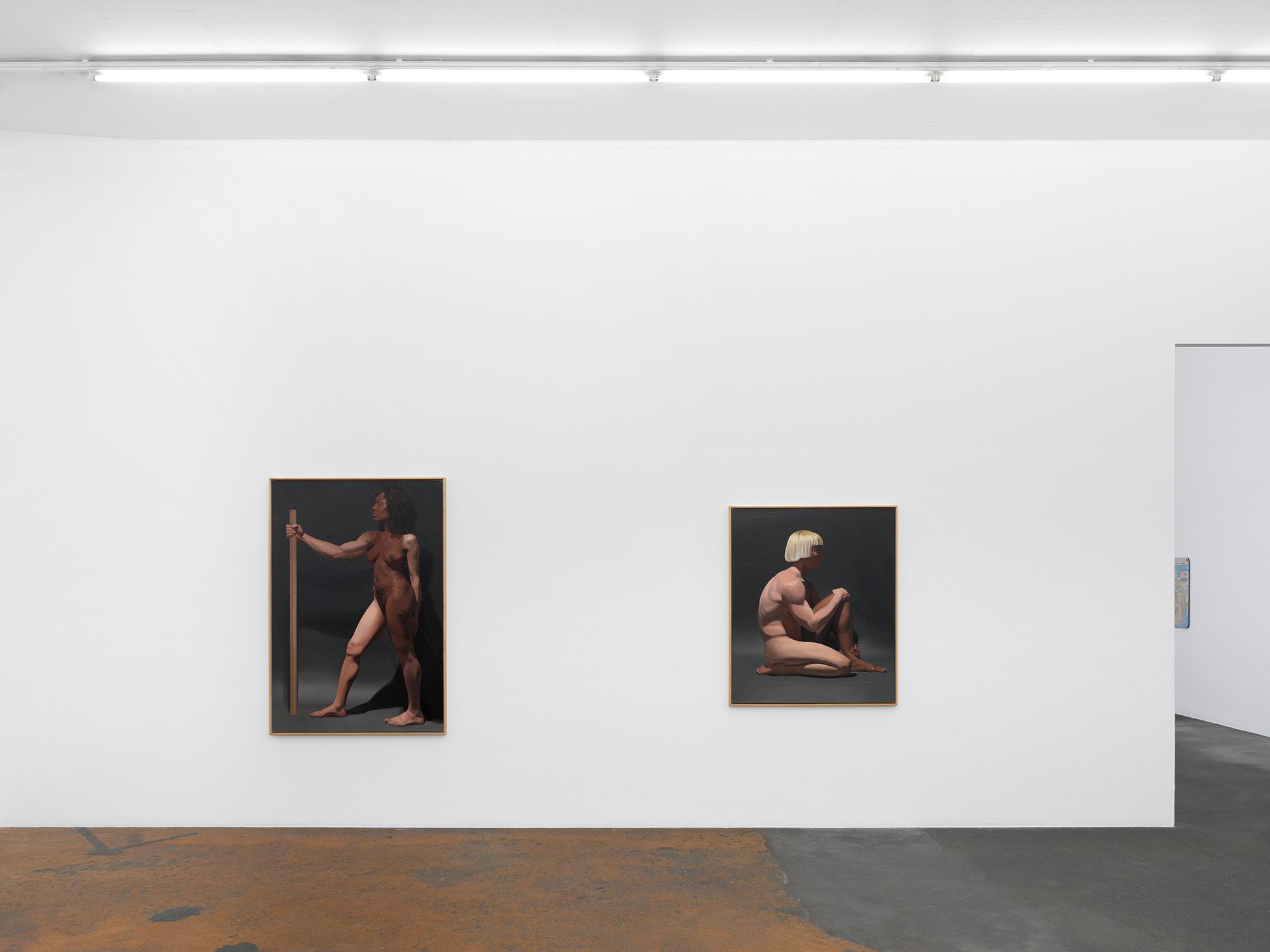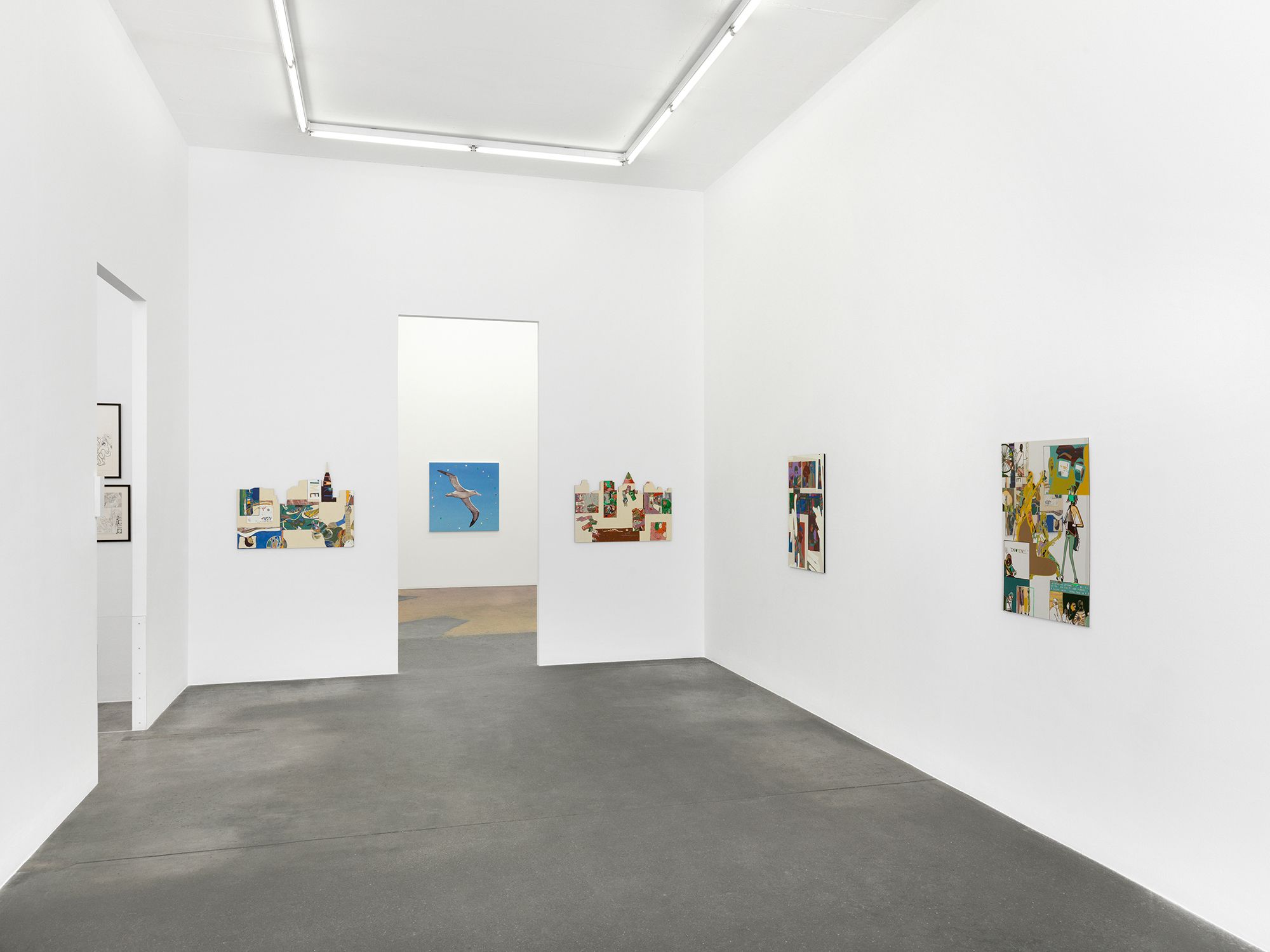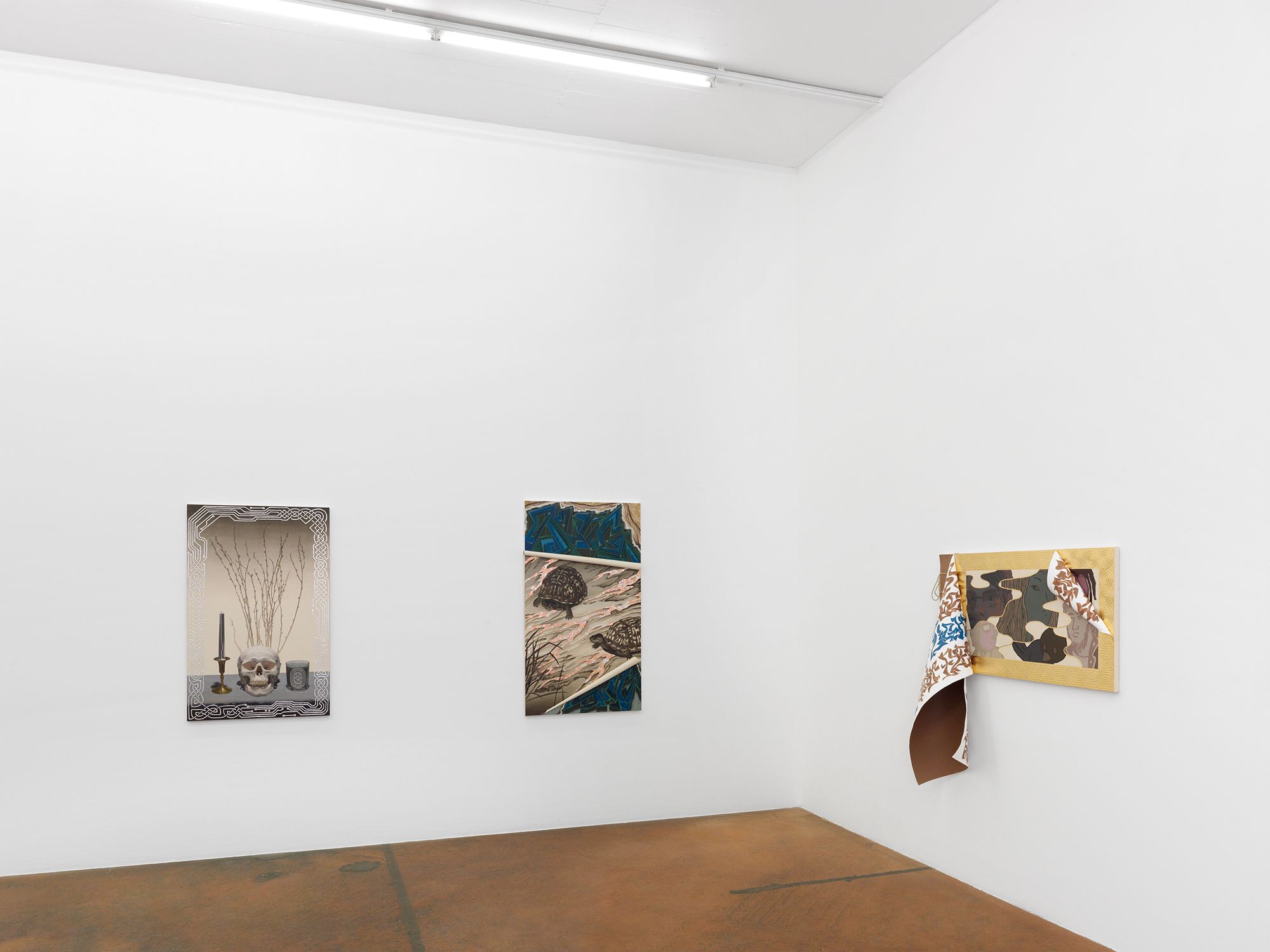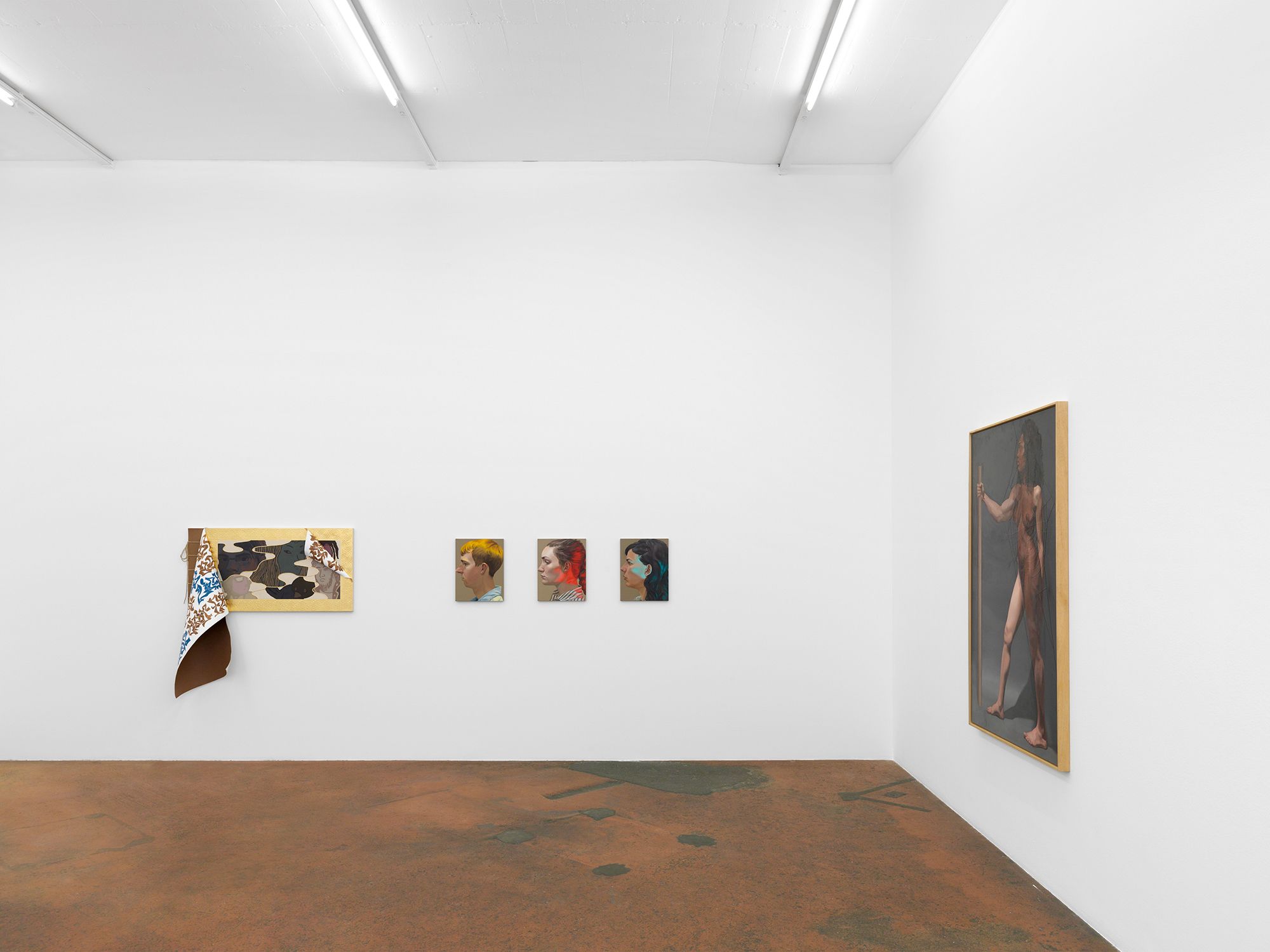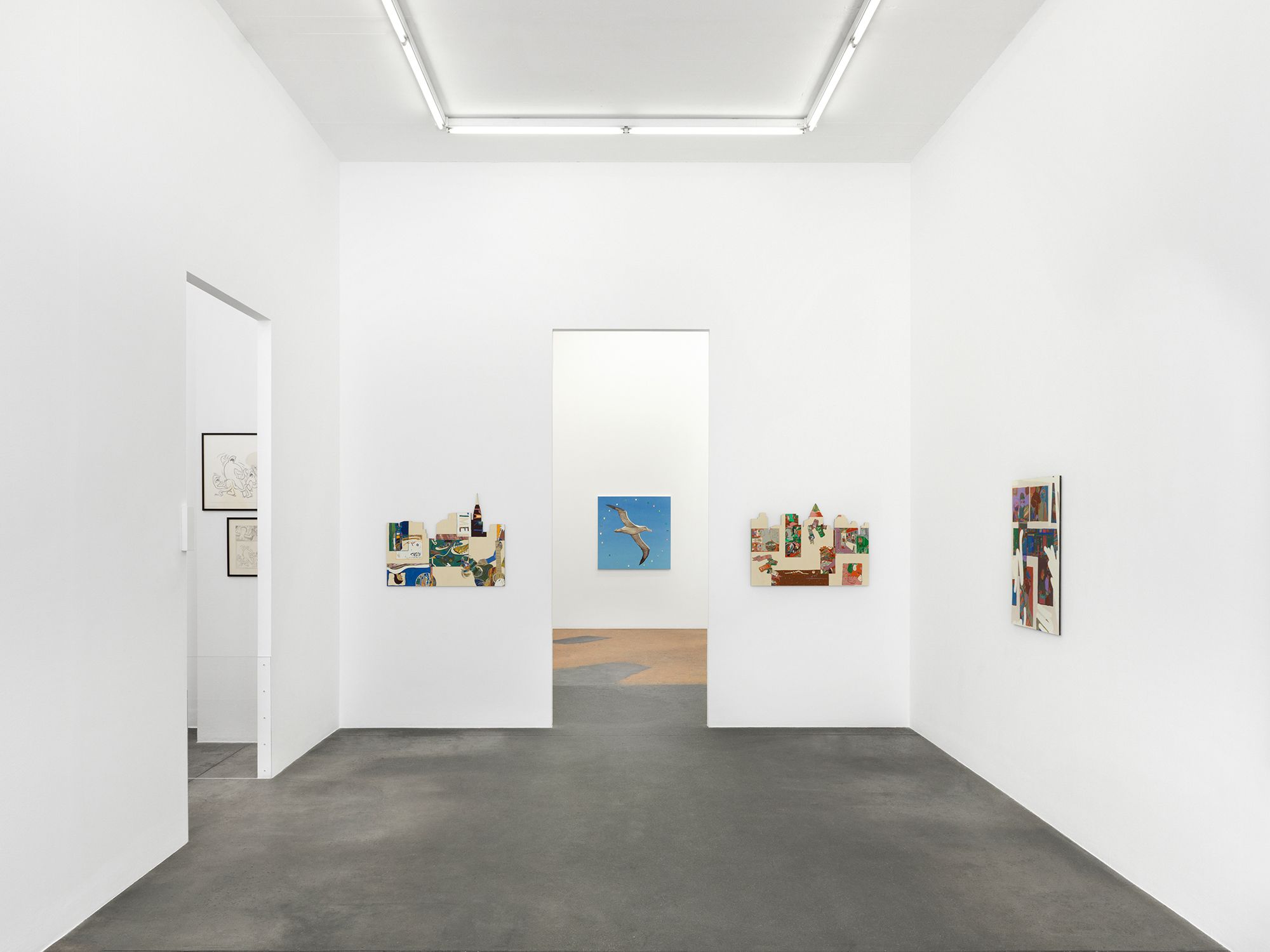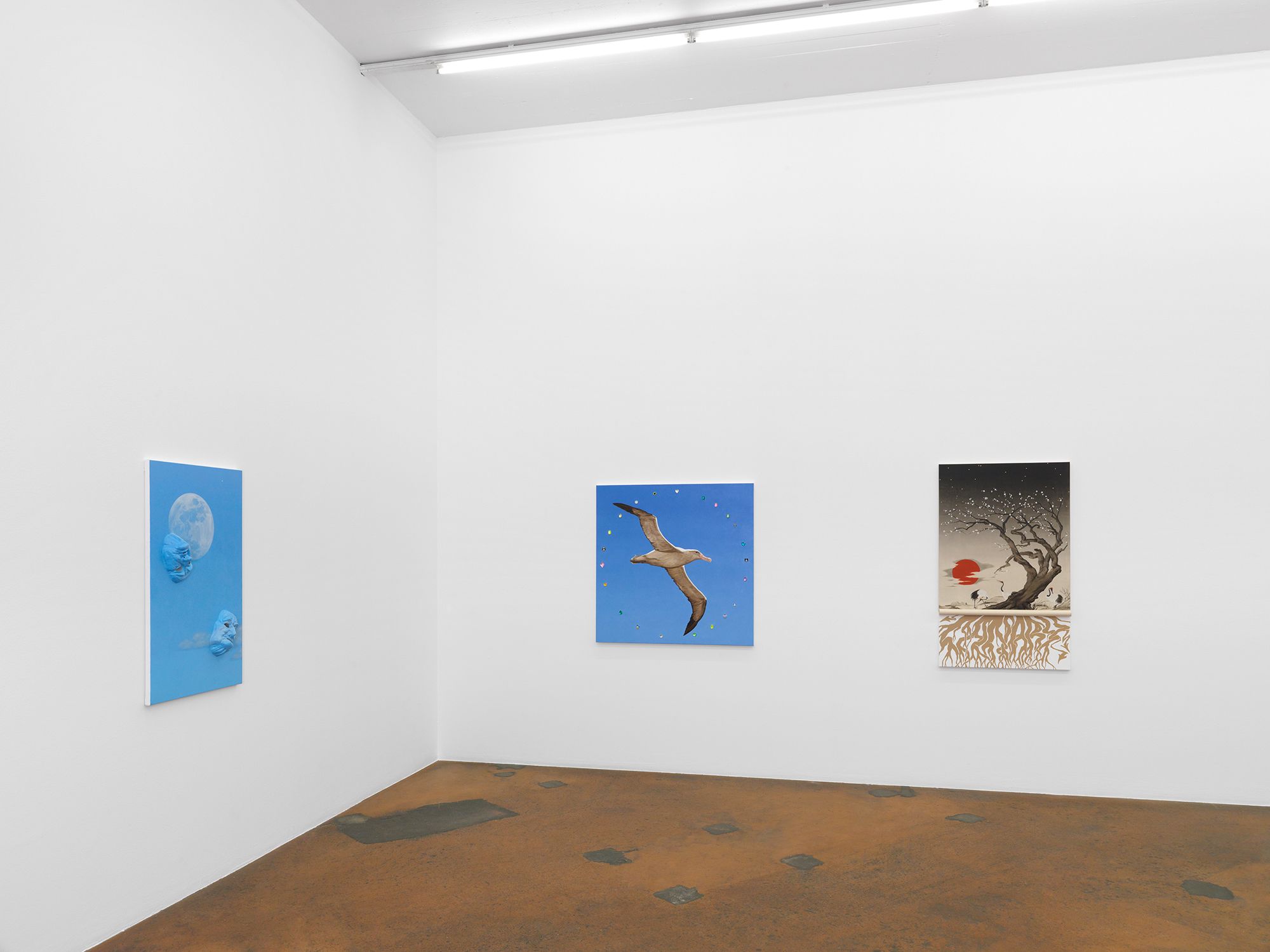As the status of the image continues to be profoundly modified by its ever-accelerating circulation, painting often claims to be a means to slow down its ongoing dematerialization, to give it back a body of sorts. A significant majority of these contemporary practices are rooted in two recent historical transformations of the status of painting: its “horizontalization” by Abstract Expressionism in the 1950s, which de facto turns painting into an object; and Pop art in the 1960s which presided over the mutation of the motif into an image. Robert Rauschenberg’s “flatbed” aesthetic, which allowed him to combine images and objects from heterogeneous sources, has been regularly revisited by subsequent generations of artists setting a stage where an endless mishmash of readymade styles create a composite image of our media-saturated psyche.
While the eclectic paintings of Greg Parma Smith—which juxtapose academic nudes, patterned origami paper, and self-published indie comics—seem to participate in this tradition, they in fact represent a real break with it. They are painted from nature “in the style of,” rather being than one-to-one appropriations. All are rendered in oil with the same degree of skill, and their sources exhaust themselves in the precision of their craftsmanship. As such, they can be likened to decorative faux painting, and the resulting images become inseparable from the very stuff they are made of. In this respect, Greg Parma Smith’s painted surfaces have more to do with Guyton\Walker’s scanned images of fruit that can espouse any contour, whether a paint can, a mattress, or a painting, than with any of his Pop forebears.
While all of Greg Parma Smith’s images call to mind an “elevated” idea of craftsmanship, whether the erudite strokes of Song dynasty brush painting, or the DIY ethos of graffiti lettering, the artist’s facture neuters any kind of heroism that associates technical mastery and self-expression. Contemporary art has scavenged the world’s images once too often (and for too long) to expect any narrative, psychological, or critical signification to surface at this point in time. Instead, these fetishistic assemblages seem to bring to light a perverse form of resistance, possibly best appraised by way of the Mod credo: extravagant, style-conscious, clean living under difficult circumstances.
- Exhibition curated by Fabrice Stroun
- The exhibition was supported by Fondation Casino Barrière de Montreux
